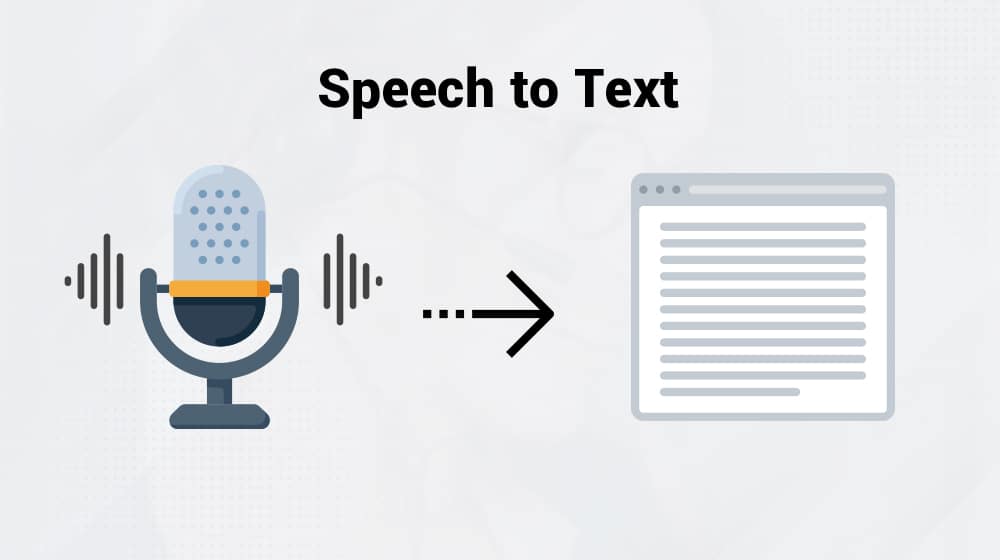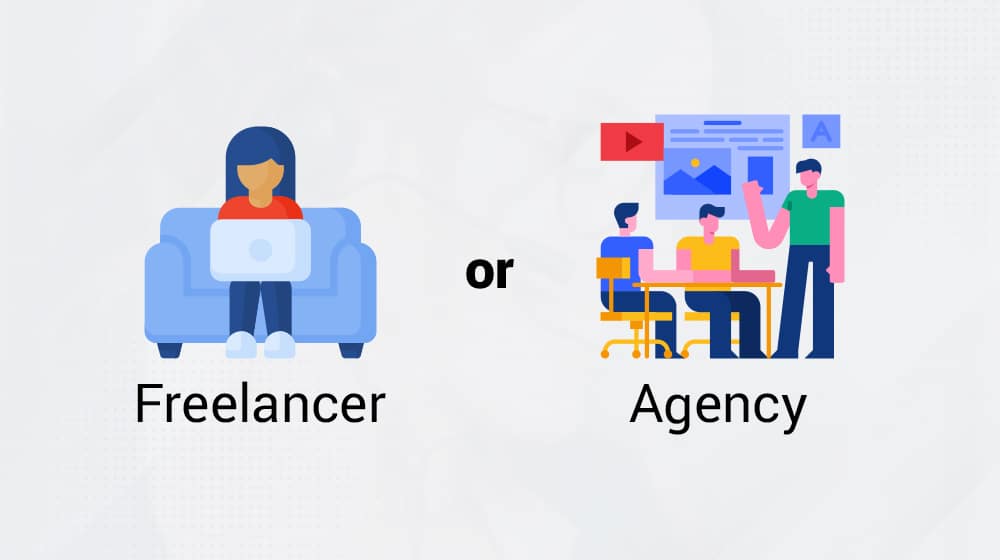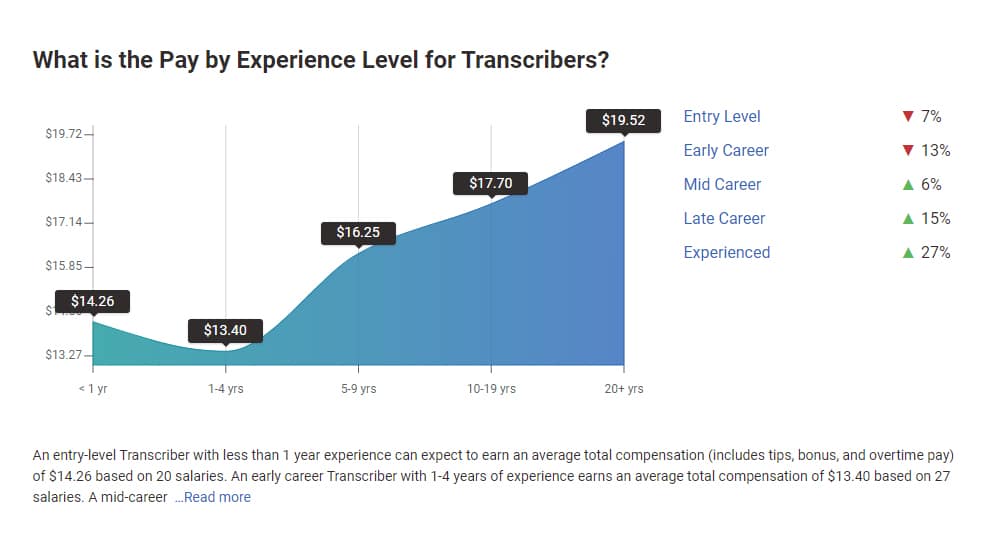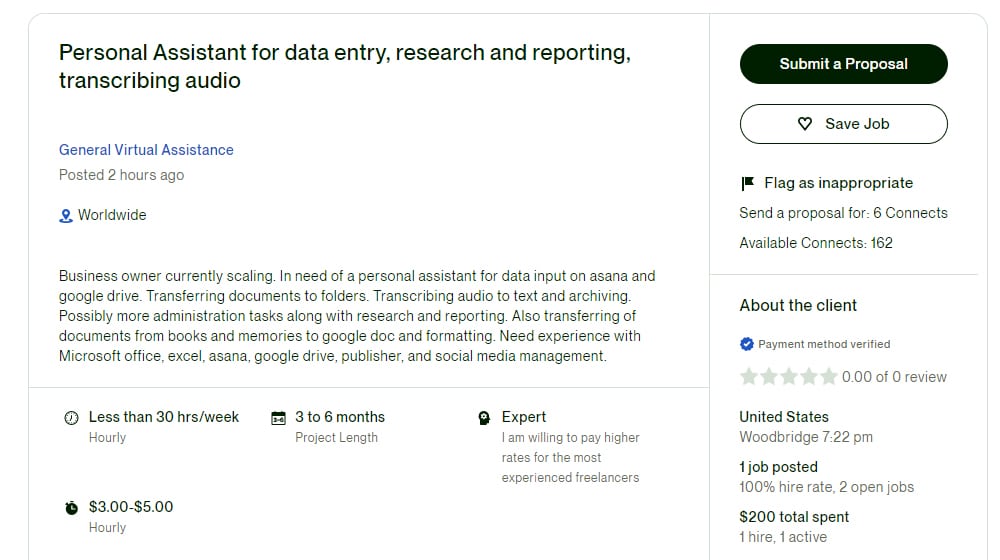Transcription is a largely freelance industry that is adjacent to, but doesn't quite overlap with, freelance writing.
Transcription is important for many different things. Some common use cases include:
You can use transcriptions of audio content in a lot of different ways. But, it's not quite as simple as just having everyone write down what they said.
 Talented transcribers need to be able to listen to people with a wide variety of speech patterns and accents and convert the spoken word into usable text content. They may or may not need to transcribe "verbatim," meaning they leave in all of the "um" and "uh" and other vocalizations. If not, they may need to clean up a document to remove them.
Talented transcribers need to be able to listen to people with a wide variety of speech patterns and accents and convert the spoken word into usable text content. They may or may not need to transcribe "verbatim," meaning they leave in all of the "um" and "uh" and other vocalizations. If not, they may need to clean up a document to remove them.Moreover, transcriptionists need to be able to accurately hear when terms they may be unfamiliar with are being used and be able to look up those terms and transcribe them appropriately. That may be easy for casual conversation, but for specialized topics, it becomes much harder. Consider an industry like pharmaceutical research; recognizing, identifying, and accurately transcribing the complex names of chemical compounds can be a huge challenge!
A good transcriptionist is worth their weight in gold.
So, how do you hire one? First, let's talk about a few questions you might have.
While there have been some significant advances in the realm of speech-to-text apps over the years, they still leave a lot to be desired.

You need to train them, for one thing, and mispronunciations, complex terms, cross-talk, and other issues can baffle them. A human who knows what they're doing is going to be infinitely better in all but the most ideal circumstances for software. For 99% of use cases, you'll want to hire a human.
Closed captions are often considered a subset of transcription, but since they're attached to media, they have special requirements. In particular, they need to have timecodes in place so that whatever system is reading the captions can place them appropriately across a video.

Captioning is often considered a premium kind of transcription; the requirements are stricter, but the media is often easier (because that media was filmed and recorded professionally), so it's more expensive.
Sometimes, transcripts are essential to a business process. Sometimes, they're critical for records (like court proceedings). Sometimes, businesses just get it in their heads that having a text version accessible is a good idea and don't consider whether or not it's ever actually useful. Before you go about hiring a transcriptionist, consider whether or not you really need the transcripts in the first place. Maybe you do! Maybe not.

If you do, well, here's how to go about hiring a great freelance transcriptionist.
The first thing you'll need to do when you're looking for a transcriptionist is to decide what, specifically, your needs will be. This generally will come down to a few key descriptors.
First, consider whether you need a general transcriptionist or a specialist who is familiar with industry terminology and jargon. Specialists will know (or be able to accurately research) specific terminology and can do things like ensuring that terms are spelled correctly. Remember, just because you're familiar with the terms you use doesn't mean a general transcriber would be.
A good recommendation is to listen to a sample of what you would ask someone to transcribe. How many acronyms, pieces of industry jargon, brand names, or specific terms are used in a given minute or two of recording? The more specialized the discussion, the more likely you will benefit from hiring a specialist transcriptionist over a generalist.
You'll also want to decide how close to verbatim you want the transcription. If you want "um" and "uh" and [COUGHS] and so on, that's called verbatim transcription. If you want that all cleaned up, it's a clean transcript, which is usually easier for a transcriber to produce and costs a little less.

Next, consider how quickly you'll need the transcriptions. Rush work costs more. If you have a tight turnaround time, you'll want rush work; otherwise, general work is fine. Different transcriptionists have different turnaround times, but you can often expect around a week for most typical recordings for non-rush work.
You'll also want to know a few details when you look for a transcriptionist. Consider things like:
These details will all help you determine a few things, like what kind of transcriptionist or transcription house you'll want to work with and, more importantly, the kinds of rates you'll be paying.
Another key decision you'll need to make is whether you want to hire an agency that handles transcription or a freelancer.
Agencies offer a few benefits, like consistency. They usually impose their own style guide, so even though you're likely to have a variety of different transcriptionists working on your tapes on the back end, the text you receive is always in the same format and style. They also guarantee deadlines and turnaround, and they offer more guarantees about the consistency and quality of the transcriptions you receive.
On the other hand, agencies are generally going to be more expensive than hiring transcriptionists directly. The platform has to take their fee, after all.

Hiring a transcriptionist directly has the chance of failure; you never know when something is going to happen, and they'll ghost you, or they'll miss a deadline, or they simply won't be very good. On the other hand, if you get a good transcriptionist and you have regular, reasonable-quality work for them, they'll probably remain loyal for years, and their familiarity with your organization will make them a great asset. Plus, they'll be cheaper than hiring the same person through an agency.
If you're looking for an agency, you can check out companies like:
There are certainly more out there as well, especially if you're looking for specialty transcription in media, in legal or medical, under heavy NDA, or in languages other than English. This is just a selection of possible agencies.
A big part of transcription is the budget you put into having it done. Just like in freelance writing, there are different payment methods for transcription.
 In most cases, especially with freelancers, you'll pay per minute of tape.
In most cases, especially with freelancers, you'll pay per minute of tape.If you have a 15-minute phone call you want to be transcribed, and you hire someone for $0.75 per minute, you'll be paying $11.25 for that transcript. If that doesn't sound like much, you're right; that's relatively low-end rates and will likely only afford novice generalists.
The remaining 10% of the time, you'll be paying per page of transcript. Pages have a standard format (no one turns in a page with double-spaced lines, size 40 font, and excessive line breaks), but this option tends to be significantly more expensive.

In rare instances, a transcriptionist might charge by the hour of work. Efficiency varies, but for most general and relatively simple topics, a good transcriptionist can do about 15 minutes of tape in an hour. So, that 15-minute phone call example earns the transcriptionist $11.25 an hour.
Pay rates vary considerably. If you need a rush turnaround, it will cost more. If you have a very complex or specialized industry with a lot of research involved, it will cost more. Some agencies and many freelancers will quote higher rates if the audio you give them is garbage, as well. In general, the cheapest rates are around $0.60 to $0.80 per minute of tape, while expensive rates for specialists with a high turnaround can be several dollars per minute of tape. For example, a rush job with timecodes, verbatim, and even shot descriptions for media transcription can cost as much as $5 per minute of tape.
If you don't want to just work with a transcription house or agency, you'll need to reach out and advertise for a freelancer. That means posting your opportunity in locations where they can find it. There are a few common locations where you can find transcriptionists, so they'll be a good place to start.

The first is, of course, simple job sites. Indeed, Monster, Glassdoor, LinkedIn, and ZipRecruiter; there are all manner of general job sites you can use to advertise your need to hire a transcriptionist (including our website!). You'll need to write a relevant job listing and know what you're looking for, but this can be a decent way to find generalists, certain specialists, novices, and the occasional experienced transcriptionist. The best freelancers aren't usually trawling these sites, though.
The second is to look at the "usual suspects" of freelancer hubs. Fiverr, Upwork, Freelancer, PeoplePerHour, and Guru are all options here.
You can also use Craigslist. Yes, Craigslist. Many transcription agencies advertise on Craigslist when they're hiring, which means that many transcriptionists look on Craigslist to find work, which means if you advertise your job on Craigslist, you'll be able to find people to work for you. Usually, advertising in a Los Angeles area is a hub; location doesn't really matter because you can hire remote, so a large number of transcriptionists from across the country will look through the LA Craigslist pages for work.
Knowing what you need and finding a freelancer are just the first parts of the process. You'll also want to prepare a test file.
A test file should be representative of the average or below-average quality of what the transcriptionist will need to work on. The most cacophonous meeting, the worst audio recording, and the strictest requirements; these all play a role. You want something typical and representative, but not necessarily the absolute worst; you don't want to scare away the good transcriptionists who don't have time for the garbage, after all.
You should also have a good idea of what a good result will look like. How will it be formatted? Will it be verbatim? Are there specialized words you want to make sure they catch? A good test can be tricky.

Importantly, you don't want to make a fake recording just to use as a test. Pick something you really need to be transcribed, even if it's an old meeting that was already transcribed in the past. In fact, an existing, satisfactory transcription can be a good resource to use to compare a new transcription.
 Make sure you pay for this test! No transcriptionist worth their salt will do free work just as a "test" because that's one of the most common scams in the industry. Unfortunately, this makes hiring an expensive prospect if you don't find a good transcriptionist right away.
Make sure you pay for this test! No transcriptionist worth their salt will do free work just as a "test" because that's one of the most common scams in the industry. Unfortunately, this makes hiring an expensive prospect if you don't find a good transcriptionist right away.Once you test your freelancer, you can determine if they're good for your needs and work with them on an ongoing basis. If they're a good fit, there you go! You've successfully hired a freelance transcriptionist.
We encourage you to share this article on Twitter and Facebook. Just click those two links - you'll see why.
It's important to share the news to spread the truth. Most people won't.